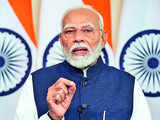Suggest a new Definition
Proposed definitions will be considered for inclusion in the Economictimes.com
Economy
- PREV DEFINITION
- NEXT DEFINITIONUnemployment TrapUnemployment trap is a situation when unemployment benefits discourage the unemployed to go to work.Read More
What is 'Unemployment'
What is unemployment?
The term unemployment refers to a state in which an individual actively seeks employment but is unsuccessful. It is said to be one of the critical measures of the economy's strength. The unemployment rate is the most widely used method to determine a country's unemployment rate. This can be found by simply dividing the number of people without jobs by the total population included in a nation's labor force.
National and local governments often endeavor to offer employment opportunities to certain people who meet the eligibility criteria set by them. Usually, work is availed for groups of individuals upon a fixed minimum wage sufficient for bare survival and provides further chances for them to find permanent jobs. These efforts are made to improve the country's economy and reduce the overall unemployment rate.
Discerning unemployment
Unemployment is a major economic criterion because it shows the capability (or incapability) of healthy, educated, and willing individuals to gain a livelihood. People unable to work for various reasons such as retirement, disability, pursuing higher education, etc., are excluded from this. The higher the country's unemployment rate, its economic growth is less productive.
Even without employment, people still maintain a steady consumption of resources. These resources are merely used up without viable beneficial feedback to the country's economy. As a result, there is a proportional decline in the fundamental economic growth. A constantly high unemployment rate is a significant indicator of financial distress in a country and may have social and political ramifications leading to a degeneration of internal structure.
On the other hand, a low unemployment rate signals maximum use of available labor in an economy, higher wage growth, and an overall increase in living standards. An ideal state for the economy of a country is to have maximum output from its potential workforce. However, a meager unemployment rate is an alert toward an overheating economy, causing inflation and unfavorable situations for employers needing extra labor.
Unemployment is broadly divided into two categories by economists—voluntary and involuntary.
Voluntary unemployment refers to an individual's decision to leave previous employment to look for other forms of work out of their own volition with no external circumstances.
Involuntary unemployment is when an individual loses their job due to various reasons, such as being fired. Their employer is unable to maintain employees and now must look for other sustenance.
What can be the causes of unemployment?
There are many different aspects of the socio-economic system that can be blamed for the cause of unemployment. According to Karl Marx, unemployment is a symptom of the capitalist system. He argued that business people required a larger number of unemployed population to make them eager enslaved people and work for a lesser wage.
Causes of unemployment can be divided into different categories- frictional and structural.
Fictional Unemployment- Frictional unemployment can be defined as a scenario when people leave searching for a better job. In the case of frictional unemployment, it is more voluntary than not. It is natural to have 3-4% in a healthy economy.
Structural employment- Structural employment is when the people's skills and income expectations do not match with the jobs available.
There is also a third category of unemployment known as cyclical unemployment. This is when new people enter the workforce.
Types of Unemployment
Frictional Unemployment: It is a natural consequence of market processes and the exchange of information, which can often be expensive. Finding new employment, hiring the individuals matching the requirements issued by the company, and then giving related jobs to suitable people often leads to frictional unemployment.
Cyclical Unemployment: It refers to the periodic rise and fall in the unemployment rate as an economy undergoes growth and losses. During the recession, unemployment rates soar while they dip substantially when an economy is strong and stable.
Structural Unemployment: It comes about due to changes in the technical skill requirements of jobs that frequently accompany the evolution of society. Often, it is easier to hire new, trained workers than to retrain old workers, resulting in loss of employment for the masses.
Institutional Unemployment: These are the socio-economic reasons for unemployment, including—
Government policies like minimum wages, oppressive job licensing laws, etc.
Discrimination in hiring workers on racial, religious, and other bases.
Labor market institutions like high unionization.
What measures can be taken to alleviate unemployment?
Frictional and cyclical unemployment can be remedied by increasing the number of jobs. Steps can be taken to encourage businesses to hire more people at a better pay rate and promote growth.
Structural employment requires more work and a better long-term solution. Changes should be done from the base level to lower the structural employment rate. Unemployment is a very deep-rooted problem. Changes in the same class include skill training and education. More encouragement towards different fields can help create more jobs and allow the backward part of the economy to flourish more.
What are the different reasons for unemployment?
The different reasons for unemployment include-
Unemployment is a problem because it gives birth to poverty, from individual to national level. Poverty leads to many problems. It also drives people towards focusing less on getting educated and living well and more on getting money. The issue will further lead to exploitation and lesser wages. On a country level, this also leads to one country getting under debt on an international level.
Disclaimer: This content is authored by an external agency. The views expressed here are that of the respective authors/ entities and do not represent the views of Economic Times (ET). ET does not guarantee, vouch for or endorse any of its contents nor is responsible for them in any manner whatsoever. Please take all steps necessary to ascertain that any information and content provided is correct, updated and verified. ET hereby disclaims any and all warranties, express or implied, relating to the report and any content therein.
The term unemployment refers to a state in which an individual actively seeks employment but is unsuccessful. It is said to be one of the critical measures of the economy's strength. The unemployment rate is the most widely used method to determine a country's unemployment rate. This can be found by simply dividing the number of people without jobs by the total population included in a nation's labor force.
National and local governments often endeavor to offer employment opportunities to certain people who meet the eligibility criteria set by them. Usually, work is availed for groups of individuals upon a fixed minimum wage sufficient for bare survival and provides further chances for them to find permanent jobs. These efforts are made to improve the country's economy and reduce the overall unemployment rate.
Discerning unemployment
Unemployment is a major economic criterion because it shows the capability (or incapability) of healthy, educated, and willing individuals to gain a livelihood. People unable to work for various reasons such as retirement, disability, pursuing higher education, etc., are excluded from this. The higher the country's unemployment rate, its economic growth is less productive.
Even without employment, people still maintain a steady consumption of resources. These resources are merely used up without viable beneficial feedback to the country's economy. As a result, there is a proportional decline in the fundamental economic growth. A constantly high unemployment rate is a significant indicator of financial distress in a country and may have social and political ramifications leading to a degeneration of internal structure.
On the other hand, a low unemployment rate signals maximum use of available labor in an economy, higher wage growth, and an overall increase in living standards. An ideal state for the economy of a country is to have maximum output from its potential workforce. However, a meager unemployment rate is an alert toward an overheating economy, causing inflation and unfavorable situations for employers needing extra labor.
Unemployment is broadly divided into two categories by economists—voluntary and involuntary.
Voluntary unemployment refers to an individual's decision to leave previous employment to look for other forms of work out of their own volition with no external circumstances.
Involuntary unemployment is when an individual loses their job due to various reasons, such as being fired. Their employer is unable to maintain employees and now must look for other sustenance.
What can be the causes of unemployment?
There are many different aspects of the socio-economic system that can be blamed for the cause of unemployment. According to Karl Marx, unemployment is a symptom of the capitalist system. He argued that business people required a larger number of unemployed population to make them eager enslaved people and work for a lesser wage.
Causes of unemployment can be divided into different categories- frictional and structural.
Fictional Unemployment- Frictional unemployment can be defined as a scenario when people leave searching for a better job. In the case of frictional unemployment, it is more voluntary than not. It is natural to have 3-4% in a healthy economy.
Structural employment- Structural employment is when the people's skills and income expectations do not match with the jobs available.
There is also a third category of unemployment known as cyclical unemployment. This is when new people enter the workforce.
Types of Unemployment
Frictional Unemployment: It is a natural consequence of market processes and the exchange of information, which can often be expensive. Finding new employment, hiring the individuals matching the requirements issued by the company, and then giving related jobs to suitable people often leads to frictional unemployment.
Cyclical Unemployment: It refers to the periodic rise and fall in the unemployment rate as an economy undergoes growth and losses. During the recession, unemployment rates soar while they dip substantially when an economy is strong and stable.
Structural Unemployment: It comes about due to changes in the technical skill requirements of jobs that frequently accompany the evolution of society. Often, it is easier to hire new, trained workers than to retrain old workers, resulting in loss of employment for the masses.
Institutional Unemployment: These are the socio-economic reasons for unemployment, including—
Government policies like minimum wages, oppressive job licensing laws, etc.
Discrimination in hiring workers on racial, religious, and other bases.
Labor market institutions like high unionization.
What measures can be taken to alleviate unemployment?
Frictional and cyclical unemployment can be remedied by increasing the number of jobs. Steps can be taken to encourage businesses to hire more people at a better pay rate and promote growth.
Structural employment requires more work and a better long-term solution. Changes should be done from the base level to lower the structural employment rate. Unemployment is a very deep-rooted problem. Changes in the same class include skill training and education. More encouragement towards different fields can help create more jobs and allow the backward part of the economy to flourish more.
What are the different reasons for unemployment?
The different reasons for unemployment include-
- Lack of In-demand skills.
- Lack of excess or opportunities This includes Illiteracy, language proficiency, transportation, childcare expenses, and many more
- Lack of skilled jobs. With changing times, the job availability rates are changing as well. The use of AI has resulted in businesses looking for more specific skills.
- Lack of employability. With the need for more jobs, there need to be more employers and businesses.
Unemployment is a problem because it gives birth to poverty, from individual to national level. Poverty leads to many problems. It also drives people towards focusing less on getting educated and living well and more on getting money. The issue will further lead to exploitation and lesser wages. On a country level, this also leads to one country getting under debt on an international level.
Disclaimer: This content is authored by an external agency. The views expressed here are that of the respective authors/ entities and do not represent the views of Economic Times (ET). ET does not guarantee, vouch for or endorse any of its contents nor is responsible for them in any manner whatsoever. Please take all steps necessary to ascertain that any information and content provided is correct, updated and verified. ET hereby disclaims any and all warranties, express or implied, relating to the report and any content therein.
- PREV DEFINITION
- NEXT DEFINITIONUnemployment TrapUnemployment trap is a situation when unemployment benefits discourage the unemployed to go to work.Read More
Related News
 What is the Sahm Rule that predicts recessions and is worrying Wall Street?Former Federal Reserve economist Claudia Sahm has rejected imminent US recession, pointing out mitigating factors like the pressure on the U.S. labor market with the arrival of a large number of immigrants which has inflated the official level of unemployment.
What is the Sahm Rule that predicts recessions and is worrying Wall Street?Former Federal Reserve economist Claudia Sahm has rejected imminent US recession, pointing out mitigating factors like the pressure on the U.S. labor market with the arrival of a large number of immigrants which has inflated the official level of unemployment. AI will not lead to job losses: Labour Minister Mansukh MandaviyaLabour Minister Mansukh Mandaviya informed Parliament on Monday that the adoption of artificial intelligence (AI) will not lead to job losses in India. Instead, he emphasized that this emerging technology will create new employment opportunities. He was responding to a query about potential job losses due to AI by Kalyan Banerjee of the All India Trinamool Congress in the Lok Sabha.
AI will not lead to job losses: Labour Minister Mansukh MandaviyaLabour Minister Mansukh Mandaviya informed Parliament on Monday that the adoption of artificial intelligence (AI) will not lead to job losses in India. Instead, he emphasized that this emerging technology will create new employment opportunities. He was responding to a query about potential job losses due to AI by Kalyan Banerjee of the All India Trinamool Congress in the Lok Sabha. Stray cattle turned entire country into 'chowkidars': Dimple YadavSamajwadi Party MP Dimple Yadav criticized the government for failing to address stray cattle, farmers' income, suicides, and inadequate budget allocations for agriculture, education, and healthcare. Highlighting the growing challenges faced by farmers and youth, she called for responsible governance and increased budget provisions to ensure better living standards.
Stray cattle turned entire country into 'chowkidars': Dimple YadavSamajwadi Party MP Dimple Yadav criticized the government for failing to address stray cattle, farmers' income, suicides, and inadequate budget allocations for agriculture, education, and healthcare. Highlighting the growing challenges faced by farmers and youth, she called for responsible governance and increased budget provisions to ensure better living standards. There is no unemployment, no need to worry about jobs: Union Labour Minister Mansukh MandaviyaUnion Labour Minister Mansukh Mandaviya assured that India's unemployment rate will drop below 3%, having already decreased from 6% to 3.2% since 2017-18. He credited the government's employment generation efforts. Finance Minister Nirmala Sitharaman introduced schemes to support new jobs, skill development, and higher education, aiming to create 50 lakh new jobs and benefit millions.
There is no unemployment, no need to worry about jobs: Union Labour Minister Mansukh MandaviyaUnion Labour Minister Mansukh Mandaviya assured that India's unemployment rate will drop below 3%, having already decreased from 6% to 3.2% since 2017-18. He credited the government's employment generation efforts. Finance Minister Nirmala Sitharaman introduced schemes to support new jobs, skill development, and higher education, aiming to create 50 lakh new jobs and benefit millions. India's unemployment rate at 3.2%, will come down below 3% in future: Mansukh MandaviyaUnion Labour Minister Mansukh Mandaviya assured that job losses are not a concern and predicted that India's unemployment rate will fall below 3% in the future. Currently, the rate is 3.2%, down from 6% in 2017-18.
India's unemployment rate at 3.2%, will come down below 3% in future: Mansukh MandaviyaUnion Labour Minister Mansukh Mandaviya assured that job losses are not a concern and predicted that India's unemployment rate will fall below 3% in the future. Currently, the rate is 3.2%, down from 6% in 2017-18. Hubbub of spokes that are the statesAt the 9th governing council meeting of NITI Aayog, Prime Minister emphasised states' need to match New Delhi's commitment to significant spending on physical infrastructure, despite potential differences in development approaches. While the Centre prioritises infrastructure to drive economic activity, states are urged to align with national development goals to access resources for both infrastructure and welfare, shaping the future of India's development agenda.
Hubbub of spokes that are the statesAt the 9th governing council meeting of NITI Aayog, Prime Minister emphasised states' need to match New Delhi's commitment to significant spending on physical infrastructure, despite potential differences in development approaches. While the Centre prioritises infrastructure to drive economic activity, states are urged to align with national development goals to access resources for both infrastructure and welfare, shaping the future of India's development agenda. Budget 2024: FMCG companies, retailers hope for improved salesProposed tax relief measures for the middle class are expected to increase disposable income and boost discretionary spending, benefiting retailers and FMCG companies. Emphasis on rural economy and job creation will drive consumption, particularly in non-metro markets. Industry experts anticipate a significant increase in demand for FMCG products due to the focus on infrastructure and employment generation in the budget announcements.
Budget 2024: FMCG companies, retailers hope for improved salesProposed tax relief measures for the middle class are expected to increase disposable income and boost discretionary spending, benefiting retailers and FMCG companies. Emphasis on rural economy and job creation will drive consumption, particularly in non-metro markets. Industry experts anticipate a significant increase in demand for FMCG products due to the focus on infrastructure and employment generation in the budget announcements. Big boost for Viksit Bharat goal: PM Modi on budget 2024Prime Minister Modi praises budget for promoting inclusive growth and job creation. Emphasizes welfare measures for various segments of society. Budget aims to boost manufacturing, exports, defense sector, and tourism. Tax reforms to benefit taxpayers with relief and simplification.
Big boost for Viksit Bharat goal: PM Modi on budget 2024Prime Minister Modi praises budget for promoting inclusive growth and job creation. Emphasizes welfare measures for various segments of society. Budget aims to boost manufacturing, exports, defense sector, and tourism. Tax reforms to benefit taxpayers with relief and simplification. Budget speech more focused on posturing than action: Congress leader Jairam RameshThe Congress criticizes the government for acknowledging the national unemployment crisis but finds fault with the budget speech. The Finance Minister's internship scheme and special support for Amravati draw scrutiny. Concerns raised over delayed Census and lack of data release. Political tensions persist over Andhra Pradesh's special category status.
Budget speech more focused on posturing than action: Congress leader Jairam RameshThe Congress criticizes the government for acknowledging the national unemployment crisis but finds fault with the budget speech. The Finance Minister's internship scheme and special support for Amravati draw scrutiny. Concerns raised over delayed Census and lack of data release. Political tensions persist over Andhra Pradesh's special category status. Congress calls eco survey 'cherry-picked' view, says India in its most precarious economic situationJairam Ramesh of Congress criticized the Economic Survey 2023-24 by Nirmala Sitharaman, highlighting inflation, China imports, trade issues, housing struggles, and private investment lags. He also noted high unemployment, corporate tax cuts, and the need for policies on gig workers, minimum wages, and ending tax terrorism. He advocated for Nyay Patra 2024 and called out Make in India.
Congress calls eco survey 'cherry-picked' view, says India in its most precarious economic situationJairam Ramesh of Congress criticized the Economic Survey 2023-24 by Nirmala Sitharaman, highlighting inflation, China imports, trade issues, housing struggles, and private investment lags. He also noted high unemployment, corporate tax cuts, and the need for policies on gig workers, minimum wages, and ending tax terrorism. He advocated for Nyay Patra 2024 and called out Make in India.
Load More